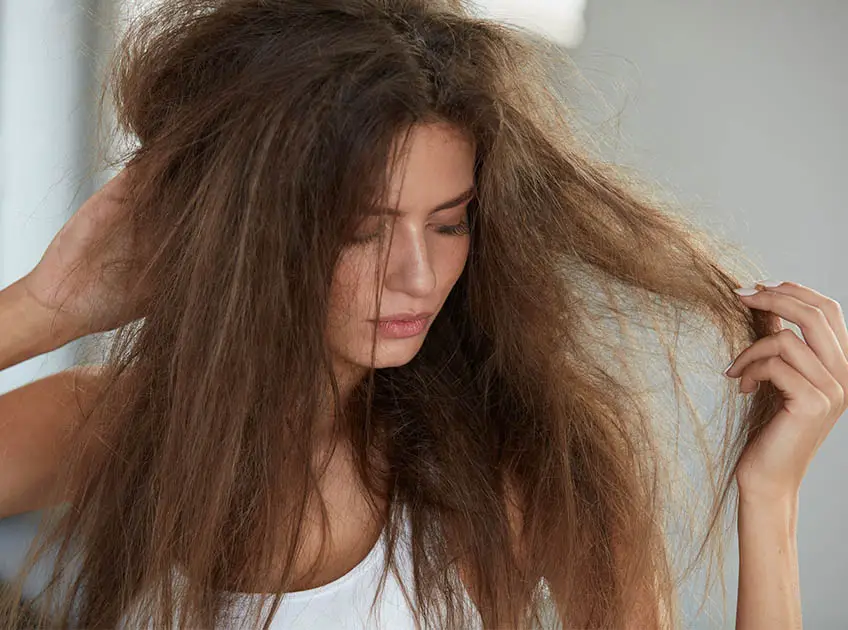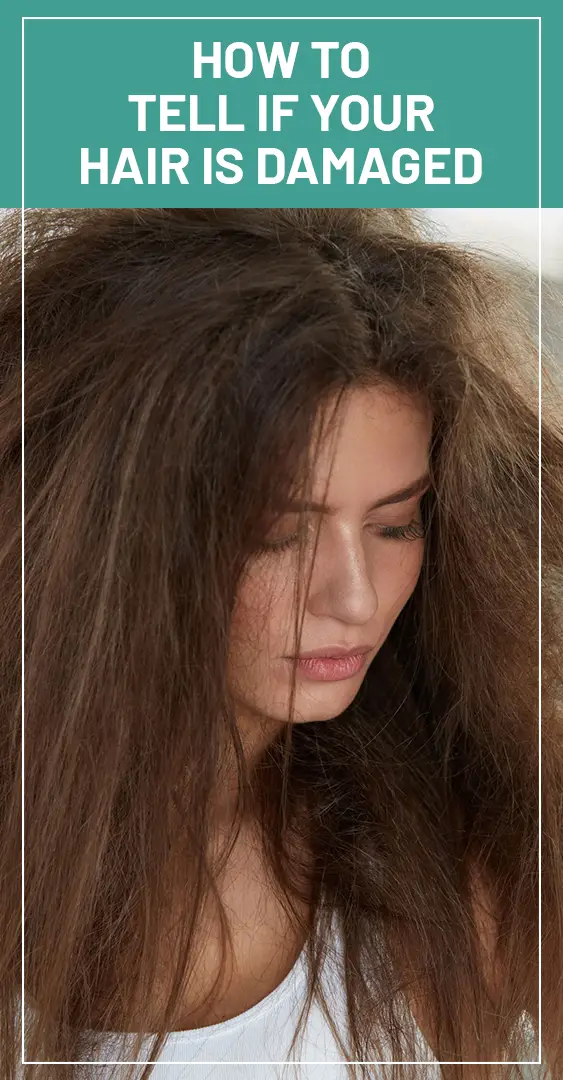
Important: This article is for informational purposes only. Please read our full disclaimer for more details.
Missing the early signs of hair damage is common; however, if you catch the early telltale signs, preventing further damage becomes easy.
If you don’t want to get dull, dry, and damaged hair, it’s time to understand what hair damage is and how to tell if your hair is damaged.
What Is Hair Damage?
Hair damage is a common problem, and there are different reasons behind it. Not taking good care of hair and not having enough nutrient-rich foods can cause hair damage in different ways.
Some warning signs that address hair damage include-
- Dry, dull, and hair locks
- Split ends
- Hair breakage and shedding
- Less bounce and elasticity
- Excessive hair tangling
It is common to have frizzy hair and unruly locks, but telling the hair is truly damaged needs special mention. At the same time, knowing the reasons behind hair damage will help to prevent them further.
Let’s uncover and learn the different reasons behind hair damage and how to tell if the hair is suffering. It will help restore health, lust, and volume of hair.
What Causes Hair Damage?

Understanding what causes hair damage is the first step to stopping it. Otherwise, you keep on practicing the same habits and damaging the growth. Some common causes behind dry, dull, and damaged hair include the following-
1. Heat Damage
Using heat styling tools excessively, like blow dryers, hair straighteners, and curling irons, can damage hair cuticles. You may look great using these hair styling tools for some time, but the long-term effects are severe.
Moreover, if you use hair styling tools without a hair protectant, the protective exterior of your hair gets damaged. All this leads to breakage, split ends, and frizz.
2. Chemical Damage
Chemicals are hair enemies; if not all, most of them are. If you apply too many chemicals on hair that come in the form of hair dyes, hair bleaches, and lighteners, the long-term effects could be disastrous.
These chemicals weaken the outer cuticles of the hair to deposit hair color. Likewise, permanent hair treatments like hair straightening, curling, or perming that use both chemicals as well as heat styling tools cause similar effects.
These practices damage and dry the hair from root to tip.
3. Styling Damage
Certain styling methods, like pulling hair too tightly or using too many bobby pins or hair clips on the scalp, can also cause hair damage.
Pulling hair too tight to make a ponytail can injure the hair follicle and make them weak. Thinning hair is one of the results of excess hair follicle damage. Due to excessive friction of hair ties and hair clips, localized breakage and unruly appearance of hair are common.
4. Environmental Damage
Harsh winds, chilly weather, and too much exposure to sun and pollutants are some of the environmental factors that cause hair damage.
However, all these reasons can be avoided by protecting hair while heading out.
Common Telltale Signs Of Hair Damage
Let’s dig a little deeper and pinpoint the signs that confirm your hair is damaged and needs special attention.
1. Split Ends
Ends of hair strands often fray as a result of dry and damaged hair. If you notice the ends splitting, it is because your hair is severely damaged. Splitting may occur in two ways-
- forked hairs strands
- thinning tips
Split ends give an unruly appearance to hair; therefore, a good trimming can help. If you often experience split ends, it’s time to prevent hair from drying by using some deep conditioning masks and get regular trimming to combat them completely.
2. Dull and Dry Locks
When the hair is damaged, it looks dull and lifeless. Such hair neither shines nor catches the light, unlike healthy hair. It is mainly due to the rough texture of the cuticle. Moreover, such hair lacks moisture to make the strands look soft and supple.
3. Hair Breakage

Hair has a protective outer structure that protects it from all types of damage. However, this protective layer gets weak when the hair dries and cannot provide further protection. It leads to hair breakage.
If you notice frizz and flyways appearing more than often, it is a common sign of hair damage. Keeping hair healthy and hydrated by having a nutrient-rich diet and avoiding excessive use of chemicals and hair styling tools will help abundantly.
4. Less Bounce
Damaged hair loses elasticity and appears limp and lifeless. People with curly hair often lose their curls due to hair damage. Such hair often lies flat and dull.
On the other hand, healthy hair has elasticity, bounces well, and stays playful.
5. Hair Thinning
Hair fall, receding hairline, and losing hair from the top of the head are all signs of hair damage. Even though male pattern baldness is more common, women also experience it to some level.
Here, it is important to know that hair thinning may also occur due to hormonal changes like pregnancy and puberty. Also, the intake of certain medications can cause hair thinning.
6. More Tangles
If your hairs have started tangling more than often, it is because they are dry and damaged. Also, the soft and silky cuticle has been lost due to the excessive use of chemicals and heat-styling tools.
Final Words
So, if you are facing these issues, it’s time to take extra care of your hair and give them special attention. It is the only way to prevent losing them all one day.
You Might Also Like:
- 7 Best Natural Hair Oils for Damaged Hair
- 7 Easy Homemade Hair Masks For Damaged Hair
- Why Does My Hair Dry So Fast?
















